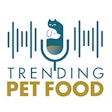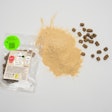Malnutrition is a common problem in critically ill dogs and is associated with increased morbidity and mortality in human medicine. Enteral nutrition (EN) delivery methods have been evaluated in humans to determine which is most effective in achieving caloric goals. This study compared continuous infusion and intermittent bolus feeding of EN in 54 dogs admitted to a critical care unit and requiring nutritional support with a nasoenteric feeding tube.
Dogs were randomized to receive either continuous infusion (group C) or intermittent bolus feeding (group I) of liquid EN. The percentage of prescribed nutrition delivered (PPND) was calculated every 24 hours.
PPND was significantly lower in group C (98.4%) than group I (100%). There was no significant difference in gastrointestinal or mechanical complications, although group C had a significantly higher rate of technical complications. Gastric residual volumes (GRVs) did not differ significantly between group C (3.1 mL/kg) and group I (6.3 mL/kg) and were not correlated with the incidence of vomiting or regurgitation
Critically ill dogs can be successfully supported with either continuous infusion or intermittent bolus feeding of EN with few complications. Increased GRVs may not warrant termination of enteral feeding
Source : M. Holahan et al., 2010. Intermittent and continuous enteral nutrition in critically ill dogs: a prospective randomized trial. J Vet Intern Med Mar 15. PubMed ID: 20337910

















